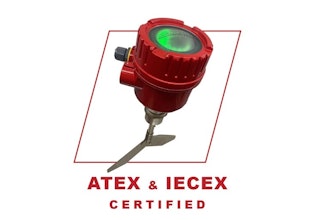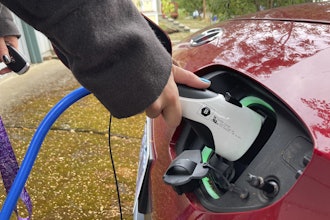As we move deeper into the 21st century, much of the focus is on cybersecurity and protecting the new digital additions to the industry. While cybersecurity is essential, especially if you rely on networked equipment or practices, it isn't the only form of security that you should be concerned about. Are physical security systems still as important as their digital counterparts? How can you incorporate cybersecurity into your physical security practices?
What Is Classified As Physical Security?
What falls under the mantle of physical security? It includes anything used to protect a plant's physical assets, such as alarms, locked gates and cameras. It also includes the security teams that patrol your physical locations. Depending on the type of product your company manufactures, you might have blast walls designed to protect the interior of your factory or production floor from explosions or collisions. This may not seem like a concern for your particular form of manufacturing, but it is something that you should consider as part of your risk assessment.
Physical security is essential for protecting your property and products throughout the production process. If you put all of your focus on cybersecurity, there isn't anything stopping someone from walking into your physical plant locations and making off with your product or even your equipment.
Cyber Security Hybrids
Physical security doesn't necessarily have to be separate from your cybersecurity practices. Smart doors, networked security cameras and biometric locks and alarms can be used to keep your property secure while still incorporating your cybersecurity practices.
You can use smart locks, for example, to secure your property. These locks may rely on security cards, biometrics like fingerprints or retinal scans or proximity card awareness. With proximity cards, employees carry an RFID or Bluetooth enabled card on their person, and the smart lock unlocks the door when the employee is within range. These locks can also be incorporated into your cybersecurity network and can even be locked or unlocked remotely by authorized personnel.
Redundancy Is Essential
Of course, these networked security measures have one inherent flaw — they require electricity, an internet connection or both to function. If your plant loses power or the WiFi network fails, these smart devices become a security hazard. This is where more traditional physical security comes into play. Even if you're relying on advanced technology to secure your property, a redundant system that functions without power or connectivity remains essential.
Risk Assessment And Old Facilities
Newer facilities may already have state-of-the-art physical and cybersecurity, but for companies with older plants, bringing your facilities into the 21st century may require a substantial investment. Risk assessment is the first step in improving your physical security. Take some time, or employ a risk assessment company, to identify your security vulnerabilities. Once you find the weaknesses, it will be easier to make a plan of attack to address those security flaws and reinforce your facility's physical security.
Investments In Your Future
Reinforcing your company's physical security is often an expensive proposition, but it becomes an investment in your company's future. If you need some convincing, consider this scenario:
You produce a volatile product. An explosion destroys part of your factory and the majority of your product for the quarter. How much will it cost you to repair your facilities and replace the destroyed product?
Now consider the cost of investing in blast-proof walls and other additional physical security. Chances are, the number is significantly less than the cost of repairs after a catastrophic event.
This preparation also helps to protect your shareholders and employees, both now and in the future, which makes the investment that much more important.
Don't get us wrong — if you incorporate digital equipment or protocols in your production process, then cybersecurity is essential. But it's critical to remember that physical security is just as important as cybersecurity — sometimes more so. Take the time to perform a comprehensive risk assessment to determine where your physical and digital security vulnerabilities are and move forward from there. Both forms of security serve as a form of protection for your investments, your employees and your future.
Megan Ray Nichols is a freelance science writer.























